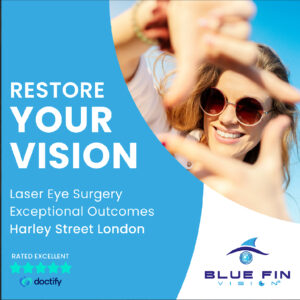Refractive lens exchange (RLE) has gained traction as an effective and long-lasting solution for individuals looking to improve their vision. While it shares similarities with cataract surgery, the key distinction lies in the fact that RLE is performed primarily for vision correction rather than to treat cataracts. This makes it particularly beneficial for those who are looking to reduce or eliminate their dependence on corrective lenses, such as glasses or contact lenses, especially as they age or develop refractive errors that cannot be treated effectively with other methods like LASIK.
RLE is particularly well-suited for patients over the age of 40, as they may begin experiencing presbyopia, a natural age-related condition that affects the eye’s ability to focus on near objects. This leads to an increased reliance on reading glasses. RLE offers a long-term solution to this problem by replacing the eye’s natural lens with a multifocal or accommodating IOL, which can restore a wide range of vision. Unlike LASIK, which only addresses one type of vision problem (usually nearsightedness or farsightedness), RLE offers the ability to correct multiple vision issues at once. The new lens can help patients see clearly at near, intermediate, and far distances, providing a comprehensive solution to age-related vision changes.
The procedure is ideal for individuals with severe refractive errors, including high degrees of myopia (nearsightedness), hyperopia (farsightedness), and astigmatism. These patients may not be eligible candidates for LASIK due to the thickness or shape of their corneas. RLE, however, doesn’t rely on reshaping the cornea but instead replaces the eye’s lens, offering a permanent and reliable fix for those who may have otherwise been left with few options. Furthermore, RLE is also a good alternative for those who cannot undergo laser eye surgery because of thin corneas or other factors.
In terms of the surgical process, RLE is typically quick, taking only about 15 to 30 minutes per eye. Local anesthesia is applied to ensure patient comfort, and the eye is numbed for the duration of the procedure. A small incision is made in the cornea to allow the surgeon access to the natural lens. The lens is then removed using advanced phacoemulsification technology, which breaks up the lens into small Refractive lens exchange fragments for easy removal. Once the natural lens is extracted, the artificial IOL is inserted into the eye. These IOLs are designed to be lightweight and durable, ensuring they remain in place for a lifetime, offering the patient freedom from glasses or contact lenses.

Recovery time after RLE is typically swift. Most patients can return to their daily activities in just a few days, although full recovery can take a few weeks. During the healing period, patients may experience some mild discomfort, such as dryness, blurred vision, or mild eye irritation. However, these symptoms generally resolve as the eye heals and adjusts to the new lens. Patients are also advised to follow up regularly with their ophthalmologist to ensure that the eye is healing properly and that the IOL remains in place.
While RLE is considered a safe and effective procedure, like any surgery, there are some potential risks involved. Although rare, complications can include infection, bleeding, or displacement of the IOL. Some patients may experience visual disturbances such as glare, halos, or difficulty seeing in low-light conditions, but these side effects often improve over time. It’s important for patients to have realistic expectations and discuss the potential risks and benefits of RLE with their surgeon before proceeding with the procedure.
RLE has become a life-changing option for individuals seeking to improve their vision and reduce their dependency on glasses or contact lenses. This surgery not only corrects refractive errors but also improves quality of life by providing clearer vision across a variety of distances. For people who have not been able to achieve satisfactory results from LASIK or other refractive surgeries, RLE represents a reliable and long-lasting alternative. Moreover, with advances in IOL technology, the options available for personalized treatment are expanding, giving patients the ability to choose the lens type that best suits their lifestyle.
In summary, refractive lens exchange offers a permanent, safe, and effective solution for individuals seeking to correct significant refractive errors or presbyopia. Whether as an alternative to LASIK or a treatment for those experiencing age-related vision changes, RLE provides a versatile approach to vision correction. With the ability to restore vision across multiple distances and reduce or eliminate the need for glasses, RLE can significantly enhance the quality of life for many individuals. By improving both near and distant vision, this procedure offers an excellent option for those who want to regain clarity and independence from corrective eyewear.